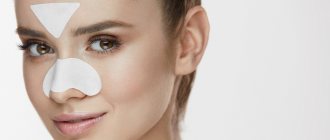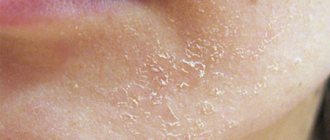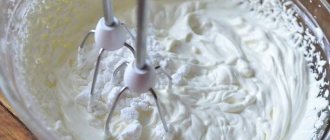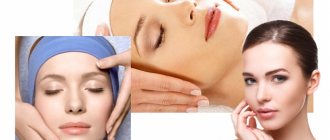Emphasis on eyelashes
Lush eyelashes allow you to visually “open your eyes” and make your look expressive. With age, eyelashes tend to thin out, so your main task is to be able to create a fan-shaped volume. To do this, it would be a good idea to make friends with a curler and choose a tutte that suits your eyelashes. When buying a curler, make sure that it is tight enough - you must make an effort to squeeze it all the way. Only such a tool will help you achieve the desired effect and curl your eyelashes with high quality.
Required Tools
No one argues that you can apply tinting cream with a regular sponge. But you shouldn’t limit yourself to just one.
- Brushes. They are best suited for distributing formulations with a liquid consistency over the skin, so it would seem that for our purposes they would be the optimal choice. But it is not so. Their main disadvantage is the increased consumption of foundation. In addition, most of the commercially available formulations are more paste-like than liquid. But brushes allow you to easily treat hard-to-reach areas of the face.
- Sponges, sponges. They are the ones most often used not only at home, but also in salon cosmetology. The main arguments in favor are ease of use, quality of coating application, masking of skin defects, and the ability to create a foundation layer of different densities. These tools do not have any significant drawbacks (unless, of course, you use a sponge or sponge of unknown origin, which is also not clean enough). You should also remember that the eye area requires increased care, since the skin there is very thin and delicate.
- Own hands. No matter what the “happy” wives of oligarchs, who are accustomed to using gold brushes and face scrub with diamond particles, say, most women apply foundation with their fingertips. In addition to the fact that this method allows you to achieve maximum accuracy, it is also the most economical.
Concealer with reflective particles
The basis of anti-aging makeup is concealer, which allows you to hide circles under the eyes. It should be applied in a thin layer, blending well and dusting with a fluffy brush for durability. But if you choose a concealer that contains reflective particles, you'll kill two birds with one stone—hiding bruises and making fine lines less noticeable. Such a concealer should not have obvious shimmer or shine, but barely noticeable particles reflect light and visually hide any imperfections.
Foundation doesn't work - what to do? Wobs will help!
Foundation is one of the most important elements of makeup. No beautifully painted lips, eyes or eyebrows will look good without a perfectly even, beautiful complexion. That is why foundations must be chosen especially carefully and reverently. It is important that the product does not look foreign on the skin; the presence of a transition from the neck to the face is a real bad manners. But what should you do if you have already purchased a foundation, which may not be cheap? It's time to reveal our secrets, tricks and tricks that really work in such cases.
The foundation didn't work - what to do?
Foundation may not be suitable due to many factors: too dark, too light, too pink, too yellow... It may simply not suit your skin type, make it shine too much, or, on the contrary, emphasize flaking. If the foundation does not suit your skin type, then nothing can be done: using it can significantly harm the skin - the consequences can be unpredictable. If it's just a matter of shade, then we can help.
If the foundation is too dark, then:
- It can be postponed until the summer and used in combination with a summer tan;
- It can be mixed with a lighter foundation in your arsenal until the desired shade is obtained;
- A foundation that is too dark can be used as a light contouring agent;
- The tone can be applied in as thin a layer as possible - so, when using a “tanned” tone, the look will be very rested - and no bronzer is needed.
If the foundation is too light, then:
- Like a too dark tone, it can be applied in as thin a layer as possible;
- Can be used for contouring for subtle highlighting;
- The light tone can be used as a concealer, highlighting the area around the eyes and making the look more rested;
- Can be mixed with a darker foundation;
- To correct the shade, you can actively use bronzers, or powder, slightly darker than the desired shade, to level out excessive pallor.
And now it’s time to reveal our main life hack, however, it works if there is a significant desire for experimentation, and it is also an excellent option for makeup artists who need to get many shades of foundation for a large number of faces. The secret is to use adjusters - highly pigmented products. which are created specifically for mixing with foundations in order to achieve the precisely required shade. Adjusters can make the tone darker or radically lighter, which is especially important for snow-whites who are desperate to find their ideal foundation; they can make the tone warmer or, on the contrary, colder - in order to adjust the tone depending on the color type. In a word, the product is completely universal and allows you to get rid of a significant number of problems associated with facial tone.
Don't forget to use high-quality tone brushes, which will help you apply it even more perfectly and evenly. Your best friends in this matter are duofiber brushes made of mixed bristles, which apply the tone with the highest quality, as well as tongue brushes made of synthetic bristles, flat in shape. You will find such brushes in the assortment of the Wobs store at reasonable, affordable prices and in consistently high quality.
My foundation dries out my skin a lot. Is it possible to moisturize it with regular cream before applying it?
It's better to change your foundation.
You can mix foundation with moisturizer on the back of your hand.
Of course you can. But it’s better to change to a foundation with moisturizer that suits your skin type.
Why don’t you change your tone to another? ? Now there are a lot of them, including those that do not dry out the skin
I always do this. Although my foundation is normal (moisturizing)
It's better to change it. In general, of course, the cream is worth applying. Or buy a base to match.
In general, so that the skin is moisturized, soft and tone. The cream was better to apply, you just need to apply it before applying moisture. face cream.. and then tone. cream, I always do this, and my skin is not dry.
Always apply cream or base before foundation.
in fact, they always first apply face cream, which serves as a base for makeup, and only then foundation or powder, besides, if you have dry skin, it’s not a problem to choose a 24-hour moisturizing cream that matches your skin type, and you should still apply it only after your daytime face cream
It’s better to throw away such a foundation or give it to someone.
of course, but in a few minutes
Actually, everyone does this, how can you not use moisturizer? Oo You sometimes ask such stupid questions...
touch.otvet.mail.ru
How to choose a foundation?
Many girls believe that the thicker the foundation, the better it is, it moisturizes the skin and lasts well. It is absolutely wrong to be guided by such a quality, because on smooth, even skin, an oily and thick foundation will look unesthetic and unnatural. It is worth choosing a foundation according to your skin type and color.
How to determine your skin type?
In order to correctly determine your skin type and subtype, you need to consult a dermatologist, but this is necessary in cases where you are selecting treatment.
For the optimal choice of foundation, you can independently determine your skin type. To do this, in the morning you need to thoroughly cleanse your skin, first with a mild cleanser, and then using a scrub or peeling that will open the pores.
After cleansing, nothing should be applied to the skin. Two hours after cleansing, apply a matting cloth and press it onto the forehead, nose, cheeks and chin.
Normal skin
Uniform traces of skin secretion will be found on the skin. The skin is quite dense, the pores in the central part of the face are almost invisible. The skin has a healthy glossy shine, it is unchanged with respect to seasonality, and is practically not subject to allergic rashes.
Dry skin
This skin is the most delicate, with thin tissues of the upper epidermis. The pores on such skin are absolutely invisible, the skin is very dense, the skin is completely matte, periodically there is a feeling of dryness and tightness, in winter it often flakes, prone to rapid aging.
Oily skin.
This is the most problematic skin type, which will not be a problem to recognize. It is characterized by abundant secretion of skin secretions, oily sheen, the presence of large pores, the formation of comedones, blackheads, blackheads and other pimples. The only advantage is that the biological aging of the skin is very long, since sebum constantly nourishes the skin, which prevents the formation of deep expression wrinkles.
Combination skin
This is the most common skin type. Significant secretion of skin secretions occurs in the T-zone areas (forehead, nose, chin) and skin rashes and blackheads often form in these same places. The cheek area is often dry and may peel.
Knowing all these nuances, you can’t go wrong in choosing a foundation!
How to choose a foundation based on your skin type?
For oily skin
All foundations for oily, oily and combination skin must contain an absorbent and a seboregulator.
Such substances are: sulfur, zinc, glycerin, vitamins A and B. This will help control skin secretions, eliminate oily shine, without drying out the skin.
Girls with oily skin are not recommended to use foundation creams with a dense texture, since the oily sheen that will seep through will create a pronounced oily sheen.
The only exception is very problematic skin, with rashes, acne and large pores. Use mineral, fluid creams, light textures that do not weigh down the skin. An excellent option is BB cream.
Dry skin
At any time of the year, dry skin needs hydration, especially in summer and winter, when the air is too dry. It is necessary to choose a foundation that includes various moisturizing components (herbal fragrances, aloe juice, vegetable oils, fatty acids).
It is very important that the foundation for dry skin contains vegetable oils that will nourish and soften the skin.
Many people believe that BB cream should be used specifically for dry skin, but this is not true, because it contains alcohol, which dries out the skin even more.
Normal skin
For normal, non-problematic skin, you can use mineral foundations that do not contain a large amount of coloring pigments. The base should be light and weightless.
The composition of such products includes purified water, pigment, stable substance and cream. There should not be any unnecessary components.
Rules for using foundation
- Before applying foundation, you need to cleanse your skin . For dry and normal skin, simply wipe with tonic, lotion or cleansing cream. Oily skin must be cleansed with foam or gel. It is recommended to apply a moisturizing base before application.
- several ways to apply foundation . Liquid foundation is applied with a sponge, dense textures are applied with a brush, mousses and foams are applied only with the fingers.
- Also, when applying, you should consider the effect you want to achieve. In order to even out the tone, you need a minimum amount of foundation, which is thoroughly rubbed over the entire surface of the skin . To disguise acne, scars and other blemishes, you need to apply foundation once, and after a few minutes apply a little more to more problematic areas. For evening makeup, foundation can be applied in two layers, and the excess can be blotted off with a sponge or napkin. Read the answer to the question: how to even out your complexion here.
Foundations and foundations - answers to frequently asked questions
What is better to apply foundation - with a brush, sponge or fingers?
This is very individual and depends on both personal preferences and the texture of the foundation. Experienced makeup artists recommend applying thick foundations with a wide brush made of combined bristles.
It helps in a matter of seconds to distribute the foundation over the entire face and create, despite the dense texture, a thin coating. Also, many makeup artists use “Beautyblender” - a new generation of sponges. They are ideal for powder foundations that do not require setting with powder after application.
But fluid foundations are best applied with your fingertips. This is how the foundation warms up and lays down in the thinnest layer, like a second skin.
For a denser coverage, you can choose a sponge. In addition, it copes best with the problem of enlarged pores. The inconvenience of the sponge is that it absorbs a lot of foundation and needs to be washed thoroughly after each use.
With a professional brush you can model the coverage from light to medium, with its help you can easily shade your foundation and create the perfect coverage. Synthetic bristles are suitable for all types of foundation.
Fingers create the thinnest coating, but this method is not suitable for girls with oily or oily skin, because the fingertips contain oil, which gets onto the skin when applied. To the list
Why does foundation crease on the skin? How to avoid this?
Firstly, this can happen if you apply a cream with a texture that is too rich. It is better to choose light textures for makeup, especially for those with combination and oily skin.
After applying a moisturizer or lifting mask, it is advisable to cleanse the skin with a toner (after the cream is completely absorbed). And only then proceed to the foundation.
Primers can be another problem. They perfectly even out the skin thanks to the silicone base, but if you apply a water-based foundation on top, it will slip and roll off. The solution is to carefully monitor the composition of the products and use only silicone foundations together with primers.
If the tone does crease, blend out the excess using a clean, damp sponge. Just swipe it all over your face, making movements as if you were applying foundation. The sponge will absorb excess and distribute the tone more evenly. To the list
Is it possible to mix different foundations (shades, brands)?
The main rule is that liquid products are mixed with liquid, and dry with dry. It is better not for non-professionals to conduct experiments on mixing dry and liquid textures. But even when mixing liquid foundations, the result is always very individual and depends on the skin type.
It is important not so much to mix as to combine. First of all, this applies to girls with problem skin, who mask imperfections with the help of dense textures. A dense tone applied to the entire face will visually “weight” it.
Nowadays, a natural translucent effect is popular. Therefore, apply dense textures locally, only where they are needed, and “light” products on clean areas of the skin. A dense tone can be replaced with a concealer or a double-action foundation (compact tone with powder). To the list
Can a moisturizer replace a makeup base and how to apply it correctly?
A moisturizer can only replace a moisturizing base because they have the same task. Bases with a powder-masking effect or reflective particles cannot be replaced with a simple cream.
The result of your makeup directly depends on how much cream you apply. If you overdo it, your foundation, powder and blush will begin to float, and your makeup will lie in spots (“leopard effect”). If you don’t apply enough, your skin will become dry during the day (“the Sugar effect”).
But the most common problem is too much cream around the eyes. As a result, the mascara is imprinted and crumbles, the shadows roll into a crease (and you, by the way, continue to complain about the shadows and mascara). The optimal portion of cream is no more than a bean grain.
After application, look in the mirror - if you see a wet shine on your face, it means that you have applied too much cream, so blot this area with a napkin or sponge.
For perfect eye makeup and longevity throughout the day, do not apply eye cream to the upper eyelid in the morning. As for the foundation itself, be sure to warm it up on your hand before applying it.
The tone will be better distributed on the face if its temperature is equal to body temperature. Start by applying a small amount of foundation to the wings of your nose, blending from the center to the periphery.
Apply foundation all over your face or to areas where needed. Do not apply foundation to your neck. Use bronzing powder on your neck. To the list
What to do if the tone collects in skin folds and wrinkles? How to prevent this?
Choose lighter textures with a shining effect. Reflective particles visually reflect light from the surface of the skin, reducing the appearance of wrinkles. The lightness of the coverage does not allow the tone to “fit” into the wrinkle, affecting only its surface.
Apply such products with your fingers: this way they warm up, adapt to body temperature and fit better on the skin. In combination, use a makeup base, the so-called “wrinkle filler,” which instantly reduces fine wrinkles and makes deep ones visually less noticeable. To the list
What ingredients should you look for in a tone if you want a glowing effect?
I recommend using mineral makeup products. Weightless mineral particles refract light on the surface of the skin, creating a subtle glow effect. Mica is one of the most famous minerals that can easily create a sparkling effect. To the list
What to do if the tone dries out?
A feeling of discomfort after applying foundation may indicate dehydration of the skin. You shouldn’t be guilty of tone; it’s better to change your daily care product to a more powerful one. It will also not be superfluous to add moisturizing masks. To the list
How to properly store tone?
Store the tone in a room that is not subject to sudden temperature changes. The usual shelf life for liquid and cream foundations is 2 years. Look at the packaging and expiration date; open tone can be stored according to the markings on the foundation packaging.
A sure way to determine a bad tone is a sharp, unpleasant odor. The peeling texture of the foundation also indicates that it has become unusable. To the list
makeupim.ru









